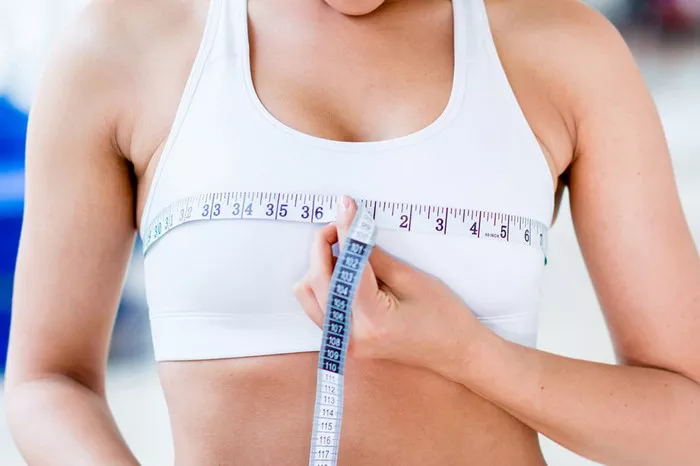Breast augmentation is a surgical procedure that involves enhancing the size and shape of the breasts using implants. After undergoing breast augmentation, it is common to experience soreness and discomfort in the chest area. In this article, we will explore the factors that can influence the duration of postoperative soreness and provide insights into managing this discomfort.
Factors Affecting the Duration of Soreness
The duration of breast soreness after augmentation can vary from person to person. Several factors can influence the length of time an individual may experience soreness. These factors include:
-
Surgical Technique
The surgical technique used during breast augmentation can impact the level of soreness experienced. Techniques such as inframammary incision (under the breast crease), periareolar incision (around the nipple), or transaxillary incision (in the armpit) can result in varying levels of postoperative discomfort.
-
Implant Placement
The placement of breast implants can affect the degree of soreness experienced. Implants can be positioned either submuscularly (underneath the chest muscle) or subglandularly (above the chest muscle). Submuscular placement typically involves a longer recovery period and may result in more soreness due to the manipulation of the chest muscles.
-
Implant Size and Material
The size and type of breast implants used can also contribute to the duration of soreness. Larger implants or those made of firmer materials may cause more discomfort initially. However, it’s important to note that the body adjusts over time, and any soreness tends to diminish as the healing process progresses.
-
Individual Healing Process
Each individual’s healing process is unique. Factors such as overall health, age, and individual pain tolerance can influence the duration and intensity of postoperative soreness. It’s important to follow the surgeon’s postoperative instructions carefully to ensure a smooth and comfortable recovery.
Typical Duration of Soreness
While the duration of postoperative soreness can vary, it is helpful to have a general understanding of the typical timeframe involved. Keep in mind that these timeframes are approximate and can differ from person to person:
-
First Few Days
In the immediate days following breast augmentation, it is common to experience the most significant soreness and discomfort. The chest area may feel tight, tender, and swollen. This is a natural part of the healing process as the body adjusts to the presence of the implants and the trauma caused by the surgery.
-
First Week to Two Weeks
During the first week to two weeks, the soreness gradually subsides, and the discomfort begins to diminish. However, it is important to note that some level of soreness may persist, although at a reduced intensity. The body continues to heal, and the tissues surrounding the implants start to relax and adjust.
-
Two Weeks to One Month
By the end of the second week or the beginning of the third week, many individuals experience a significant improvement in their comfort level. The soreness continues to diminish, and daily activities become easier to perform. However, it’s important to still exercise caution and avoid strenuous activities or heavy lifting as advised by your surgeon.
-
One Month and Beyond
After about a month, most individuals find that their soreness has significantly diminished or disappeared altogether. The breasts continue to settle into their final position, and any residual discomfort typically resolves during this period. However, it’s important to remember that complete healing can take several months, and the breasts will continue to evolve in shape and feel over time.
Managing Postoperative Soreness
While postoperative soreness is a natural part of the healing process, there are steps you can take to manage and alleviate discomfort:
-
Follow Postoperative Instructions
It is crucial to carefully follow the postoperative instructions provided by your surgeon. These instructions may include taking prescribed pain medications, using cold compresses, wearing a supportive bra, and avoiding certain activities that can strain the chest muscles.
-
Take Rest and Recovery Seriously
Adequate rest and proper recovery are essential for the healing process. Allow yourself time to rest, avoid strenuous activities, and listen to your body’s signals. Engage in light activities such as short walks to promote circulation, but avoid activities that can strain the chest area.
-
Apply Cold Compresses
Cold compresses can help reduce swelling and provide temporary relief from soreness. Use ice packs or frozen gel packs wrapped in a thin cloth and apply them to the chest area for short periods as recommended by your surgeon.
-
Wear a Supportive Bra
Wearing a supportive bra, such as a surgical or sports bra, can help minimize discomfort and provide added support to the healing breasts. Follow your surgeon’s recommendations regarding the type and duration of bra usage.
-
Communicate with Your Surgeon
If you experience persistent or severe pain, swelling, or any concerns during the recovery process, it is essential to communicate with your surgeon. They can provide guidance, reassurance, and potentially recommend further measures to alleviate your discomfort.
Conclusion
Postoperative soreness is a common occurrence after breast augmentation surgery. The duration of soreness can vary depending on factors such as surgical technique, implant placement, implant size and material, and individual healing process. While the initial days and weeks after surgery may involve significant soreness, it gradually diminishes over time. Following your surgeon’s postoperative instructions, allowing yourself adequate rest and recovery, and managing discomfort through measures such as cold compresses and supportive bras can help alleviate soreness and promote a smoother healing process. Remember, each individual’s healing journey is unique, and if you have any concerns, it is important to consult with your surgeon for personalized guidance and support.

